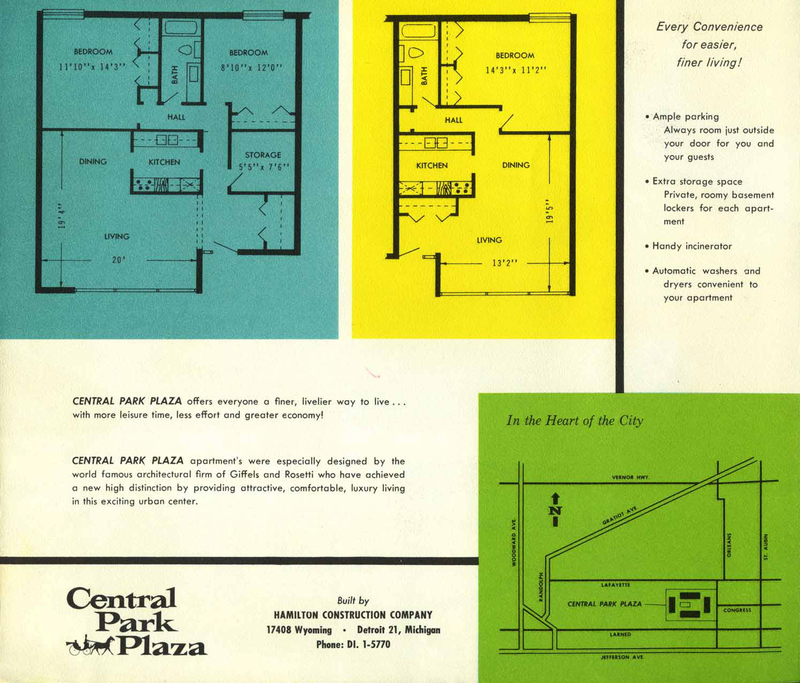THE EFFECTS OF URBAN RENEWAL
Mid-century redevelopment projects, intended to make Detroit more livable, had the opposite effect on residents of the predominantly Black neighborhoods torn down during the city’s revitalization efforts. Residents forced out of their homes often had nowhere else to go: the city already had a housing shortage, they often could not afford the new housing developments, and many banks would either offer loans to Black Detroiters at unfavorable rates or refused to offer them loans at all. Black residents continued to face employment discrimination in the city, with some employers and employment agencies denying them jobs or promotions.
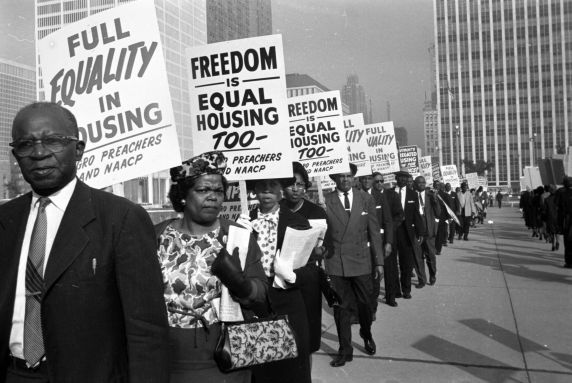
Members and supporters of the NAACP picket outside of the Open Occupancy Hearing at Cobo Hall, Detroit, Michigan. August 1963. From the Detroit News Photograph Collection.
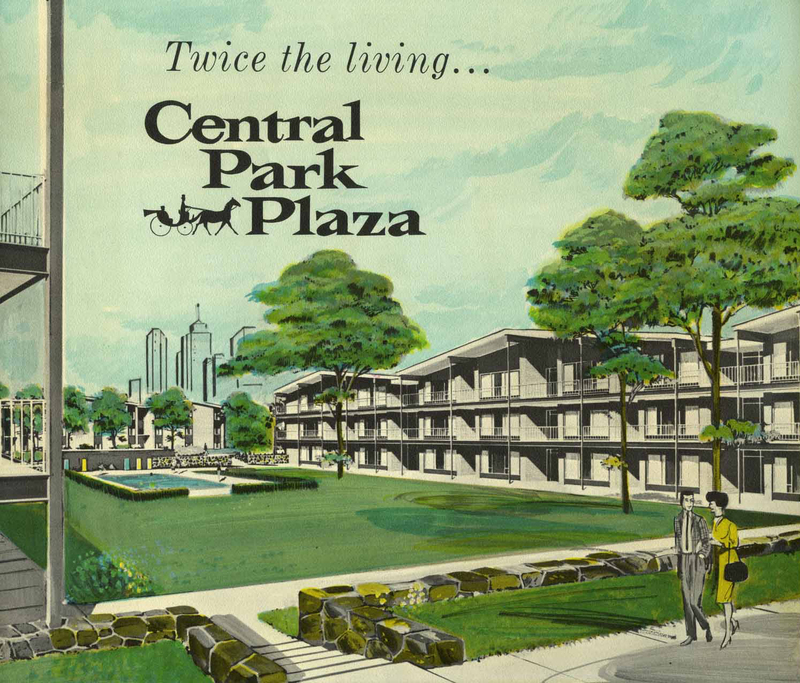
Front cover of a brochure for Central Park Plaza. Designed by the architectural firm of Giffels and Rosetti, Central Park Plaza offered "every convenience for easier, finer living." The majority of residents displaced by Central Park Plaza's construction could not afford to move into the apartment complex. Situated near the Mies van der Rohe-designed Lafayette Park, the apartments were built in 1963 and still house Detroit residents today. c. 1962. Carl Almblad Papers, Box 12, Folder 42.
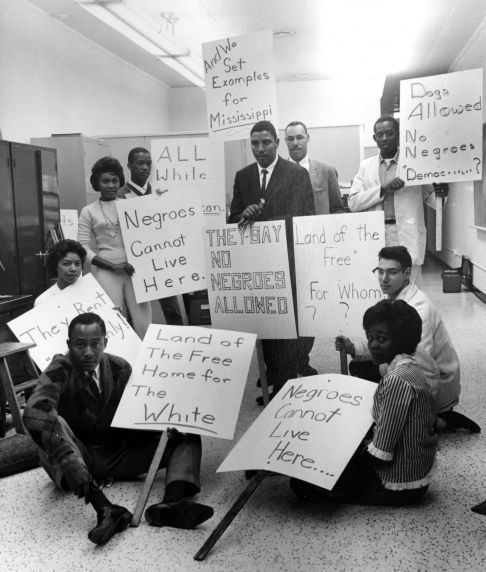
Members of the NAACP’s Housing Committee create signs in the offices of the Detroit Branch for use in a future demonstration. 1962. From the NAACP Detroit Branch Records.
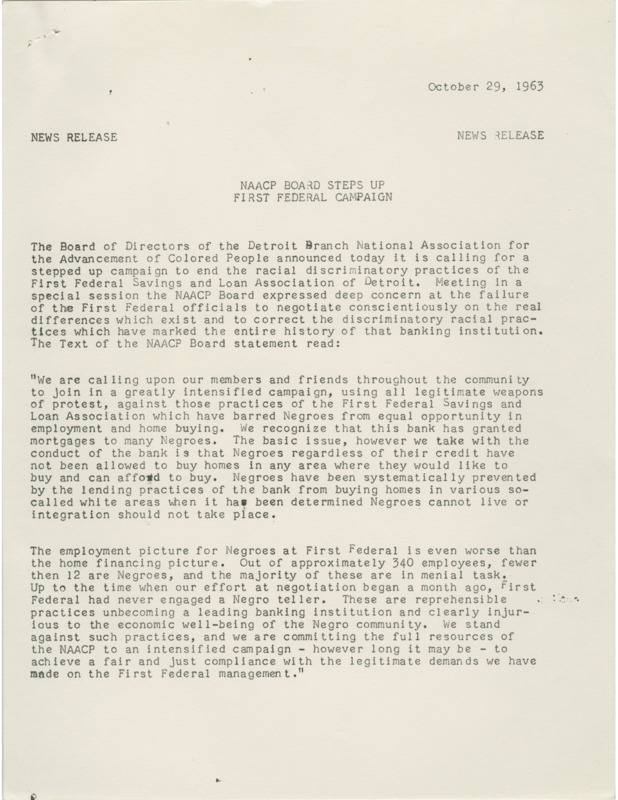
An NAACP Detroit Branch news release objects to discriminatory home loan and employment policies by a Detroit bank. In it, the Detroit Branch explains, "We are calling upon our members and friends throughout the community to join in a greatly intensified campaign , using all legitimate weapons of protest, against those practices of the First Federal Savings and Loan Association which have barred Negroes from equal opportunity in employment and home buying....The basic issue, however we take with the conduct of the bank is that Negroes regardless of their credit have not been allowed to buy homes in any area where they would like to buy and can afford to buy. Negroes have been systematically prevented by the lending practices of the bank from buying homes in various so-called white areas when it has been determined Negroes cannot live or integration should not take place." October 29, 1963. NAACP Detroit Branch Records, Part I, Box 24.
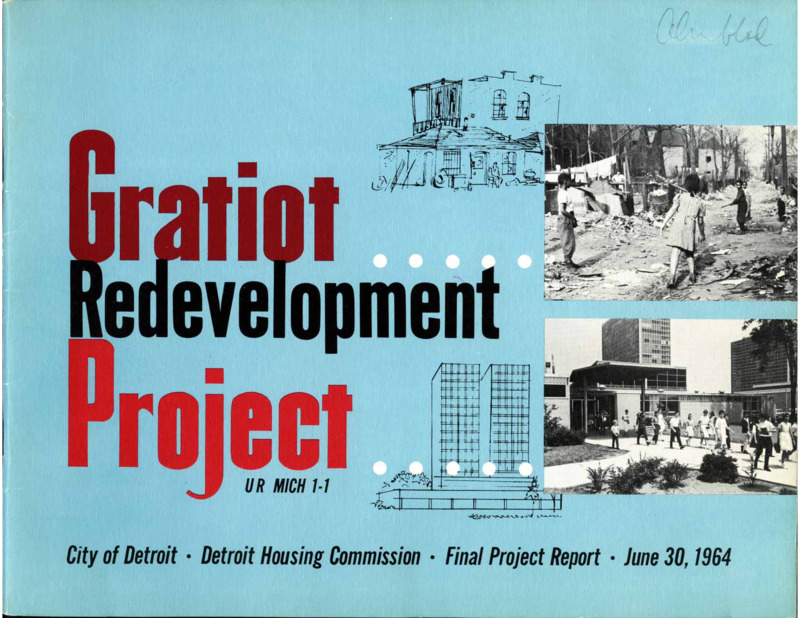
Envisioned and designed to build a "new type of inner city habitation," Mayor Jerome P. Cavanagh released the final report for the Gratiot Redevelopment Project in 1964, eighteen years after planning began. Detroit was the first city in the United States to implement residential redevelopment under the Federal Housing Act of 1949. The project cleared 129 acres including, most notably, the Black Bottom and Paradise Valley areas, displacing Black families and businesses. Some individuals and families remained in what was left of the neighborhoods and others moved to public housing developments, but the Field Relocation Office could not trace every person after they were forced out. June 30, 1964. Carl Almblad Papers, Box 12, Folder 43.
How was Detroit different for the primarily white residents who could live in these new developments versus Black Detroiters who could not?
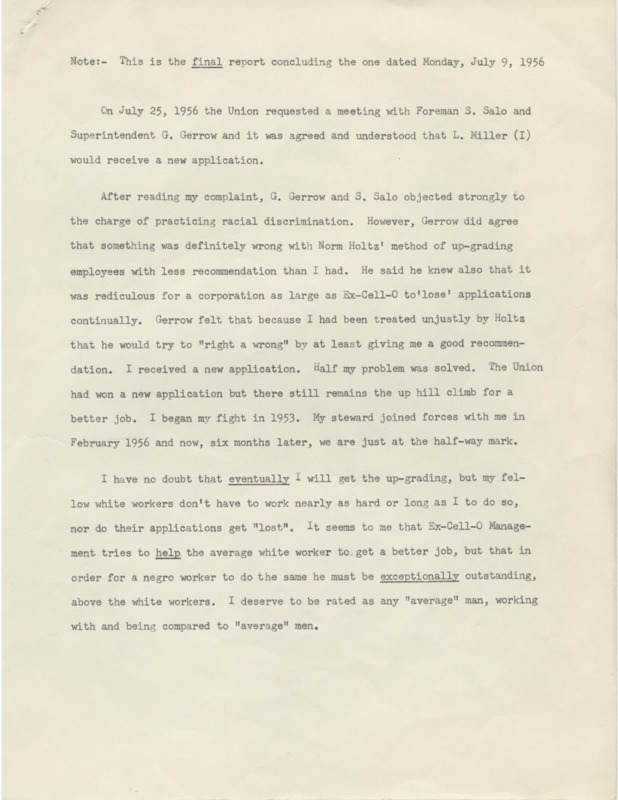
A discrimination complaint filed by L. Miller, a Black employee of Detroit manufacturing company Ex-Cell-O, explains the circumstances that prevented his job advancement. A final complaint filed by Miller on July 25, 1956 explains that, "Management tries to help the average white worker to get a better job, but in order for a negro worker to do the same he must be exceptionally outstanding…" July 9-25, 1956. UAW Fair Practices and Anti-Discrimination Department Records, Box 16, Folder 23.
